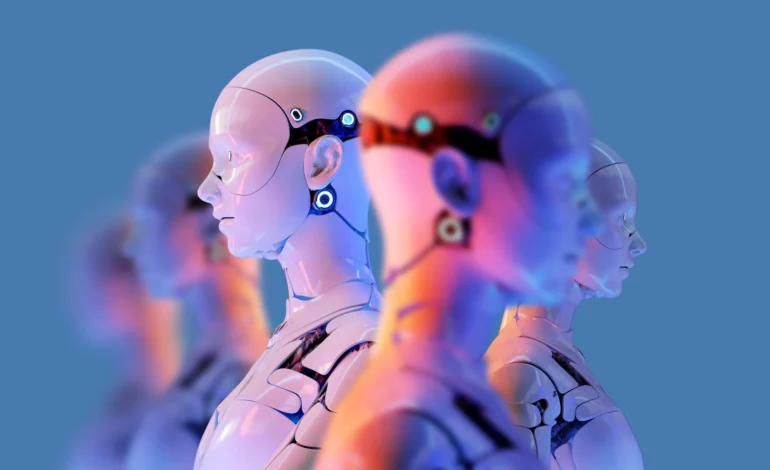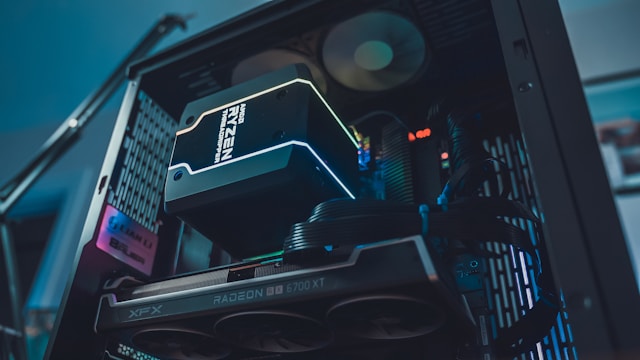The Future of Robotics: AI and Automation in Manufacturing and Retail

The Evolution of Robotics: How AI and Automation Are Changing Manufacturing and Retail
For decades, the concept of artificial intelligence and robots has been a staple in science fiction. However, what was once mere science fiction is now becoming reality, transforming entire industries, particularly manufacturing and retail.
The Rise of Robotics in Manufacturing
Advancements in AI and automation have revolutionized manufacturing by streamlining complex processes. These innovations include predictive maintenance algorithms that optimize equipment efficiency, AI-powered vision systems for quality control, and robots capable of performing tasks with high precision.
Industrial robots are now integral to production lines, handling repetitive tasks with speed and accuracy. Machine learning enables these robots to adapt to dynamic work environments, enhancing their effectiveness in manufacturing automation. This leads to increased productivity, reduced errors, and higher product quality, resulting in cost savings for businesses across all sectors.
Benefits of Robotics in Manufacturing
Industrial robots are employed across various industries, excelling in tasks that require precision and repetition. They enable manufacturers to achieve high-volume operations efficiently, benefiting medium- and small-sized businesses as costs decrease with technological advancements.
Maximizing Productivity:
- Robots operate continuously without breaks or shifts, reducing downtime and increasing throughput.
- Shorter production cycles enhance efficiency and faster turnaround times improve customer satisfaction.
Improve Quality and Consistency:
- Automation is combined with technologies like the Industrial Internet of Things (IIoT) to ensure consistent product quality.
- Real-time monitoring allows for preventative maintenance, minimizing downtime and enhancing operational reliability.
Enhanced Safety:
- Robots reduce risks in hazardous environments by performing tasks safely at all times.
- Remote supervision ensures real-time control, allowing adjustments without compromising safety.
The Rise of Robotics in Retail
While manufacturing benefits from AI and automation, retail is also seeing a transformation. Self-checkout systems powered by AI enhance customer experience while reducing staff workload. Additionally, chatbots integrated with these systems provide instant assistance to customers.
Robotic Sorting Systems are being used to optimize inventory management, ensuring products are placed in the correct locations quickly. These technologies not only improve efficiency but also reduce errors associated with manual sorting.
Integration with IoT and AI
The integration of AI and automation extends beyond individual robots; it creates interconnected systems within manufacturing and retail environments. For example, CNC machines use AI to enhance precision in manufacturing, while 3D printing enables customized product production.
Automation technologies like Automated Guided Vehicles (AGVs) and robotic arms further streamline operations, allowing for flexible product flow and streamlined manufacturing processes. These innovations lead to shorter lead times and easier customization of products.
Future Trends
The future of robotics is poised for exponential growth with advancements in AI, machine learning, and IoT. Self-learning robots will become more adaptable, capable of handling complex tasks without human intervention. Autonomous systems will reduce the need for constant monitoring by incorporating advanced algorithms that improve efficiency and adaptability.
Challenges and Considerations
While robotics offers significant benefits, it also presents challenges such as high initial costs, potential job displacement, and the need for retraining workers to integrate these technologies into their workflows. However, these challenges are outweighed by the substantial improvements in productivity, efficiency, and customer satisfaction.
Conclusion
In conclusion, AI and automation are transforming manufacturing and retail industries by enhancing efficiency, improving product quality, and increasing operational flexibility. As technology advances, we can expect even more sophisticated applications of robotics and AI in these sectors, reshaping the way businesses operate and compete in the modern market economy.
For those considering implementing automation or exploring its potential, understanding these technologies is key to making informed decisions that align with business goals for growth and innovation.



